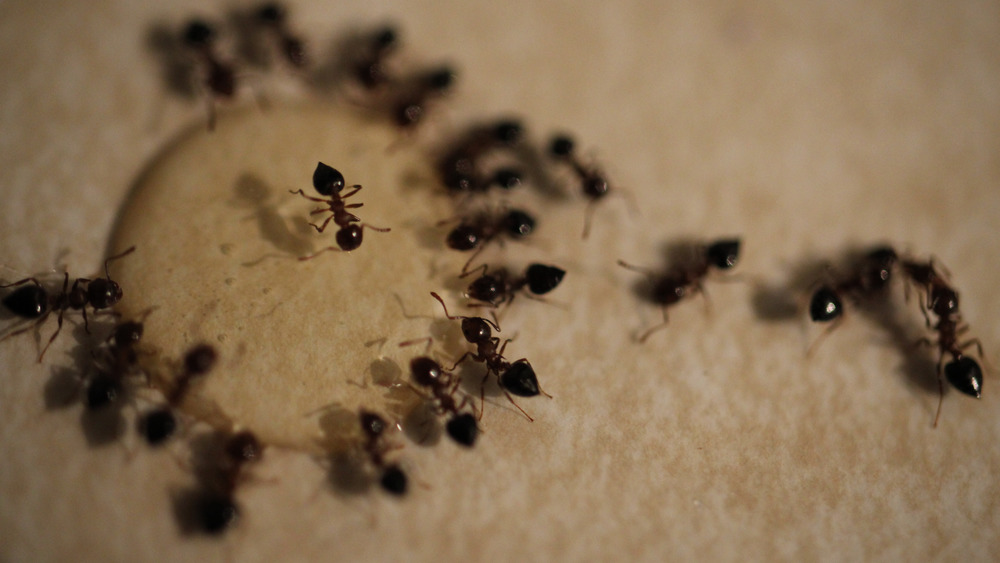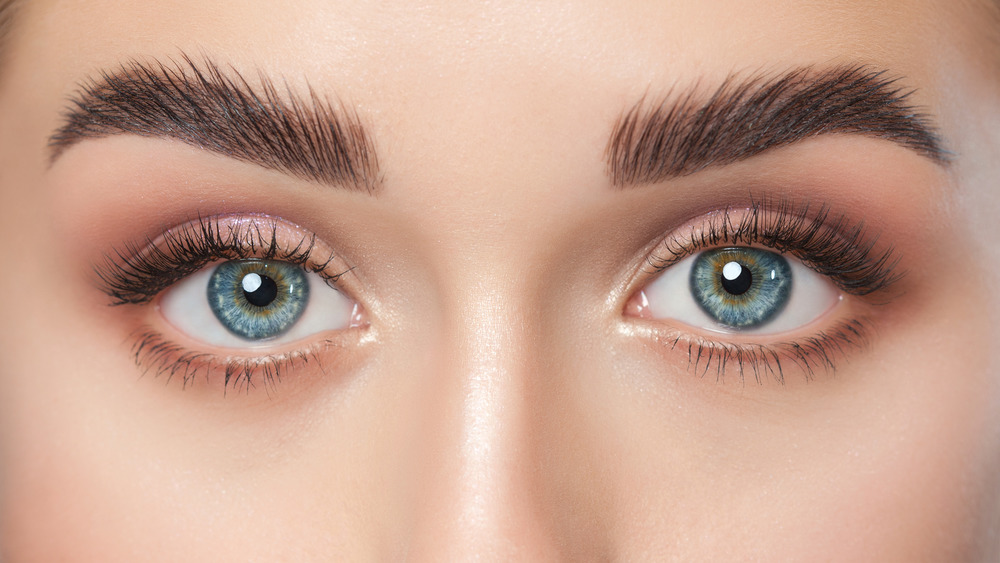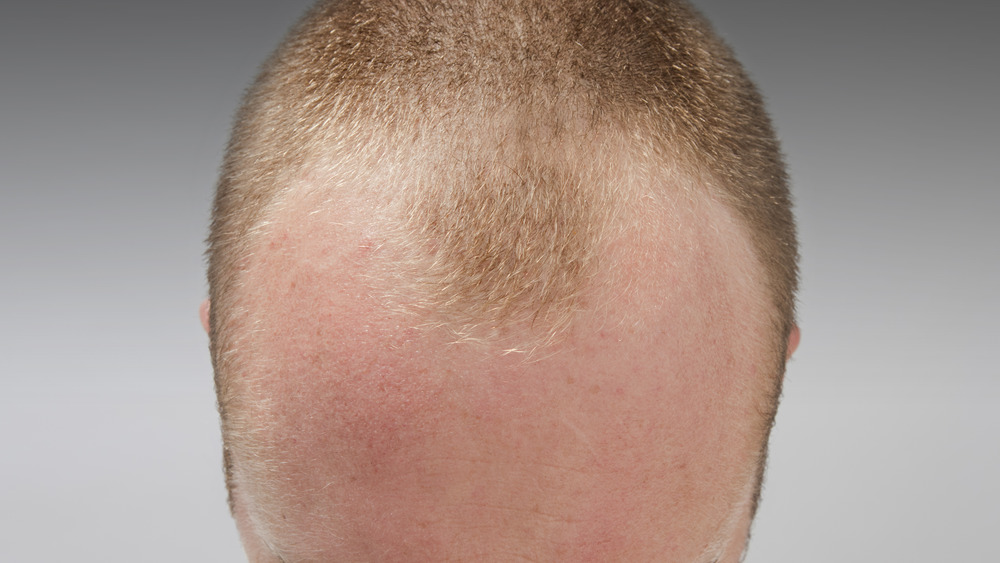Rare Genetic Quirks You May Have Thought Were Normal
Genes are complex. They're responsible for a bunch of things in life such as health and susceptibility to certain diseases, body type, height, eye color, intelligence, and more. Medline Plus defines a gene as the "basic physical and functional unit of heredity." What is important to remember is that genes basically consist of DNA, and it is believed that human beings have as many as 25,000 genes.
Genes are, of course, what people get from their parents. Interestingly, according to science, genes are pretty much the same in everyone, and just less than one percent of the total number of genes differ from person to person. These differences are what make us stand out from each other. Who would've thought? Another interesting fact — because genes are so varied, researchers give them long and complex names replete with symbols, numbers, and letters. Genes can also cause quirks among us — a phenomenon that's not only of great interest to researchers but can also impact our lives in subtle ways.
Sometimes, there are things people encounter that look or seem normal but are in fact, genetic quirks. It may be something as simple as the ability to smell something that others can't. Unusual but true. Here's taking a look at some of the genetic quirks that are perceived to be normal occurrences but aren't.
Coriander reminds some people of soap
If you're someone who's often been put off by the presence of cilantro in your dishes, you're not alone. As Delishably explains, cilantro does remind some people of soap — approximately 20% of the total population whose genes don't allow them to enjoy the herb like the rest of us. Basically, those who get disgusted by the taste of cilantro have the ability to detect the presence of aldehydes, which are compounds that are present in cilantro and are by-products of soap. Surprise! Research on this phenomenon was first led by Charles Wysocki at the Monell Chemical Senses Center, as Mental Floss.
It boils down to this — scientists believe that a reception gene labelled OR6A2 essentially controls how aldehyde components bind to receptors, and those without this gene cannot identify aldehydes or recognize the soapy smell that seems to bother some and not others. That said, coriander is definitely a highly polarizing herb in the western world, and there are groups dedicated to people sharing how much they dislike coriander.
Ants smell like blue cheese and vinegar sometimes
Earlier in November, according to Popular Science, a TikTok video caused a bit of a social media uproar. In the video, viewers were asked whether they can detect the unpleasant smell of ants, which led to a few commentators being torn between agreeing to this and many others claiming rubbish. They revealed that they didn't know ants could smell like anything at all.
Turns out, ants can and do release certain scents, especially if they're in trouble or have died. One particular kind of ant that is often present in the Midwest and on the East Coast is the typical house ant, which can give off a smell that is similar to blue cheese when squashed. Additionally, a few other type of ants release formic acid that smells like vinegar when they find themselves in danger. It is believed by some that the ability to detect this smell is linked to a genetic quirk that makes some people more likely to detect the odor compared to others.
A genetic mutation may be responsible for blue eyes
As reported by Science Daily, research from the University of Copenhagen pointed to the idea that those among us with blue eyes come from a common ancestor. They attributed this to a genetic mutation that is believed to have happened thousands of years ago.
"Originally, we all had brown eyes," stated Hans Eiberg from the university's Department of Cellular and Molecular Medicine, back when the findings were first revealed. "But a genetic mutation affecting the OCA2 gene in our chromosomes resulted in the creation of a 'switch,' which literally 'turned off' the ability to produce brown eyes."
What happened next? Simply put, the OCA2 gene is responsible for producing melanin that, in turn, assigns color to eyes, hair, and skin. The switch led to the lightening of eyes from brown to blue. Simply put, the genetic mutation didn't do away with the OCA2 gene itself. Just think about it — if that was the case, everyone would lack color in their eyes, hair, and skin.
Plus, as per Eiberg, those with blue eyes have a slight variation as far as melanin in their eyes is concerned, which points to the theory that they had common roots. "They have all inherited the same switch at exactly the same spot in their DNA," Eiberg pointed out. Later research pointed to the idea that at least three genetic factors could cause blue eyes and would differ from region to region.
Bright lights make some of us sneeze
If you've found yourself sneezing when confronted by bright lights, you're not the only one. As per the Scientific American, this is known as the photic sneeze reflex and is something that isn't fully understood by scientists. It is, however, attributed to a genetic quirk. The exact details still remain unclear.
Louis Ptáček, a neurologist at the University of California, San Francisco, explained that this is definitely something worth diving into. "If we could find a gene that causes photic sneezing, we could study that gene and we might learn something about the visual pathway and some of these other reflex phenomena," he said back in 2008. Plus, as Popular Science reports, babies have also been known to sneeze when exposed to bright lights, which makes it more likely that it's a genetic quirk. A Swedish study did demonstrate that in families, when one parent was shown to have the condition, over half of the kids had it as well.
This isn't dangerous, though. It is believed that around ten to 35% of the population does have the photic sneeze reflex. More research is needed to understand this better, though. Ptáček even pointed out to PBS that some folks don't mind this quirk in the least because it gives them a bit of a relief and helps them "get a sneeze out."
Some of us can't smell fish
If you're someone who never gets bothered by fish and cannot actually detect the presence of smelly fish, you have your genes to thank. As per a report by Nature, those with a certain genetic variant can better handle the smell of fish. And for some, it may even smell pleasant and remind them of something like caramel. Icelandic researchers Rosa Gisladottir and Kari Stefansson from deCODE Genetics in Reykjavik looked for genetic variants among thousands of participants, asking them to test a variety of scents while studying their DNA.
The participants were treated to scents from things like cinnamon, liquorice and well, fish. They were then asked to rate the smell and name it. As per the study, a mutation in a gene responsible for a certain odor receptor was found responsible for the differences in the answers from the participants. For example, those who had the genetic mutation found the smell of fish less overwhelming, and many of them linked the smell to items like rose, caramel, and potatoes, while others could not smell it.
As explained by the New York Times, this mutation is rare. As per researcher Paule Joseph, who works at the National Institutes of Health, it's possible that dietary patterns could have an influence on these genetic patterns. "It would be good to see a similar study in another population and more diverse group of individuals," he said.
Blond hair is linked to a quirk too
Ever envied those with naturally blond locks? That might be the result of a genetic quirk as well. As highlighted by the Los Angeles Times, a study showed that while people from the Solomon Islands may be dark skinned, at least 5% to 10% of them have blond hair, which is believed to be the result of a genetic quirk.
This study was conducted by researchers from Stanford University, who worked with samples from 43 participants with blond hair from the Solomon Islands coupled with 42 participants with very dark hair. DNA was taken into consideration as the researchers tried to understand the differences in hair color better. They concluded that a genetic variant causes some of the people from the region to have blond hair. This is different from what is found among Westerners, implying that blond hair evolved at least twice.
Blond hair is considered to be rare in this world and is primarily associated with people from northern Europe as well those from South Pacific islands like the Solomon Islands. The study's abstract read, "The mutation is at a frequency of 26 percent in the Solomon Islands, is absent outside of Oceania, represents a strong common genetic effect on a complex human phenotype, and highlights the importance of examining genetic associations worldwide."
For some, being thin is really in their genes
In 2019, researchers from the University of Cambridge zeroed in on something interesting that would make many of us sit up and take notice. They found a link between the ability to stay thin and genes. Professor Sadaf Farooqi at the Wellcome-MRC Institute of Metabolic Science from Cambridge led the study and worked with 2,000 participants who could be classified as skinny but healthy.
They asked several questions about the participants' health and lifestyle habits while conducting DNA studies. The team of researchers, after comparing the DNA of 14,000 people with that of their participants, found that genetic variants can indeed play a significant role in weight differences, including being thin and being obese. The researchers were able to conclude that those who are thin do have lesser genetic variants that are linked to being overweight.
Farooqi explained why this study was so significant. "This research shows for the first time that healthy thin people are generally thin because they have a lower burden of genes that increase a person's chances of being overweight and not because they are morally superior, as some people like to suggest," he said, before adding that it can be rather easy to judge without acknowledging genes are often responsible for certain things that can't be fully controlled.
The widow's peak is genetic
The widow's peak isn't all that common but definitely shows up in a small part of the population and has been linked to genes. As per Bustle, the widow's peak can be best explained as a tiny, V-shaped patch of hair close to the forehead. While the genetic variant that could lead to you having a widow's peak isn't completely understood, it's probable that there is someone in your family with the same feature.
As explained by Healthline, there isn't enough conclusive evidence that can help us establish whether a single gene is responsible for this, which means that there may be several genes at work. It has also been identified with other genetic conditions like Aarskog syndrome, which is characterized by certain abnormalities and is usually found in men. It's also been linked to the Donnai-Barrow syndrome that can lead to rare facial features. Other genetic conditions that have been identified include frontonasal dysplasia and Opitz G/BBB syndrome. They are known to cause abnormalities in the face and body respectively.
One easy explanation that may not be entirely connected to genes is, of course, hair loss and a receding hairline that might make a widow's peak far more prominent.
Some of us simply cannot sweat
Some folks have an unusual genetic quirk that makes it impossible for them to sweat. At all. According to a 2014 report by Business Insider, those who have this rare condition called anhidrosis do not have the ability to sweat. This might be entirely caused by the mutation of a single gene. A Pakistani family involved in the study had several kids who didn't sweat at all.
This condition could be potentially harmful if someone with the quirk is exposed to increased temperatures and may make them more susceptible to heat stroke. While it's possible to have anhidrosis on account of damaged sweat glands, the participants in the study were found to have normal sweat glands. The team of researchers — supervised by Katsuhiko Mikoshiba, a molecular cell biologist from Japan's RIKEN Brain Science Institute, and Niklas Dahl, a genetics researcher at Sweden's Uppsala University — further concluded that this condition was the result of a genetic mutation. The condition is linked to a gene that encodes a protein called IP3 receptor type 2 and is connected with cell activity like movement, secretion, and differences in shapes.
"This is the first report of IP3 receptor type 2 mutation in human disease," Mikoshiba said in a statement. "The surprise was that a point mutation, not a large deletion was enough to cause the human disorder." He also pointed out that the opposite of this condition, which is too much sweating, is more prevalent.









